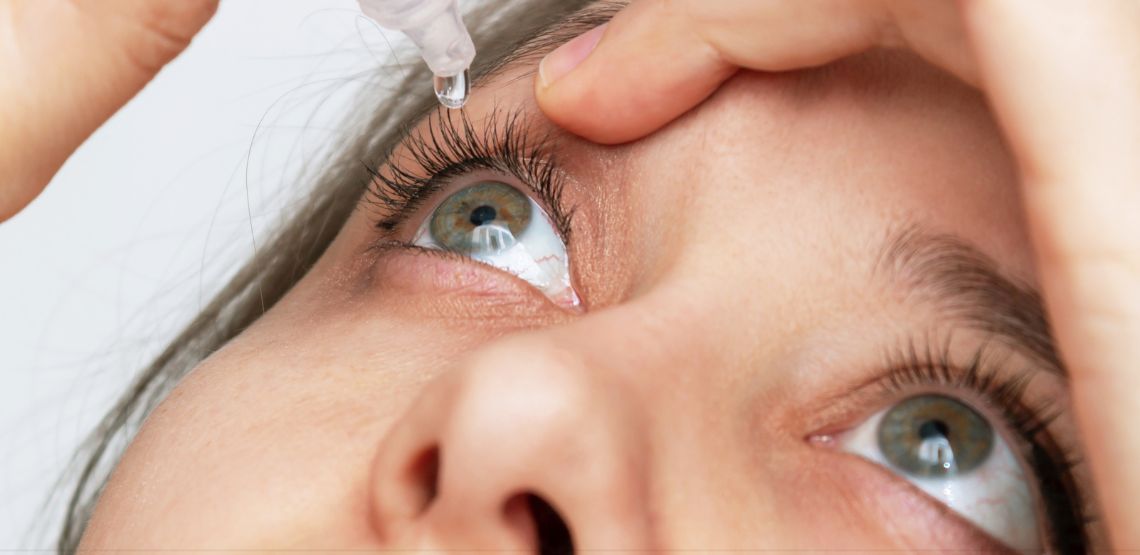Clear Vision Ahead
Dry eye can be uncomfortable and can make daily activities harder. It’s important to know the signs so you can get help. Treatments are available, including Cequa, a prescription eye drop that helps increase tear production.
10 Signs of Dry Eye
1. Itchy Eyes
Feeling itchy in your eyes can be one of the first signs of dry eye. This can make you want to rub your eyes, which can cause more irritation. Try to avoid rubbing, as it may make the itching worse.
2. Blurred Vision
When your eyes do not have enough moisture, you may notice that your vision becomes blurry. This blurriness can come and go, especially after using screens or reading for a long time.
3. Gritty Feeling
Some people say their eyes feel gritty or like there is sand in them. This sensation can be very annoying and can make you feel uncomfortable throughout the day.
4. Excessive Tearing
Even though dry eyes often mean less tearing, they can also cause your eyes to water too much. Your body tries to create tears, but they may not be the right type to help.
5. Eye Fatigue
If your eyes feel tired after looking at a computer or reading, this may be a sign of dry eye. Your eyes work harder to stay comfortable when they are not getting enough moisture.
6. Redness
You might notice that your eyes appear red and irritated. This redness can make you look more tired or sick, which can be frustrating.
7. Sensitivity to Light
If bright lights or sunlight bother your eyes, you might have sensitivity to light. This can make it hard to enjoy outdoor activities or be in well-lit rooms.
8. Difficulty Wearing Contact Lenses
If you wear contact lenses, you may find them uncomfortable with dry eyes. They can feel like they don’t fit well, leading to the need to remove them often.
9. Burning or Stinging Sensation
A common sign of dry eye is a burning or stinging feeling in your eyes. This can make it hard to concentrate on tasks like reading or working on a computer.
10. Eye Discharge
Sometimes, dry eyes can cause a thick discharge to form. If you notice this, it’s important to talk to a doctor, as it can indicate that your eyes need attention.
Treatments for Dry Eye
If you notice any of these signs, there are many treatments to help you feel better:
- Warm compresses: Soaking a clean cloth in warm water and placing it over your closed eyes for a few minutes can help ease discomfort and stimulate tear production.
- Artificial tears: Over-the-counter eye drops can help keep your eyes lubricated. It’s best to choose preservative-free drops if you use them often.
- Sunglasses: Wearing sunglasses outdoors can protect your eyes from bright lights and wind, helping to keep them moist.
- Omega-3 fatty acids: Adding foods rich in omega-3s, like fish or supplements, to your diet may improve tear production and reduce dry eye symptoms.
- Cequa: This prescription eye drop contains cyclosporine and helps reduce inflammation in the tear glands. It’s usually applied twice daily and can take several weeks to show results.
- Punctal plugs: Your doctor may suggest tiny devices called punctal plugs to help keep tears on the surface of your eyes longer.
- Lifestyle changes: Small changes can make a big difference. Try to take breaks when using screens, stay hydrated, and avoid smoke.
- Humidifiers: Using a humidifier in your home can add moisture to the air, especially in dry winter months.
- Avoiding allergens: If certain allergens irritate your eyes, try to stay away from them. This can help reduce symptoms related to dry eye.
- Regular eye exams: Visiting your eye doctor regularly can help track your eye health and decide on the best treatments for your needs.
Keeping Up With Eye Care
Recognizing the signs of dry eye is essential for finding the right help. If you notice any symptoms, reach out to an eye care professional. With proper treatment, you can manage dry eye and improve your comfort, making daily activities easier and more enjoyable.
